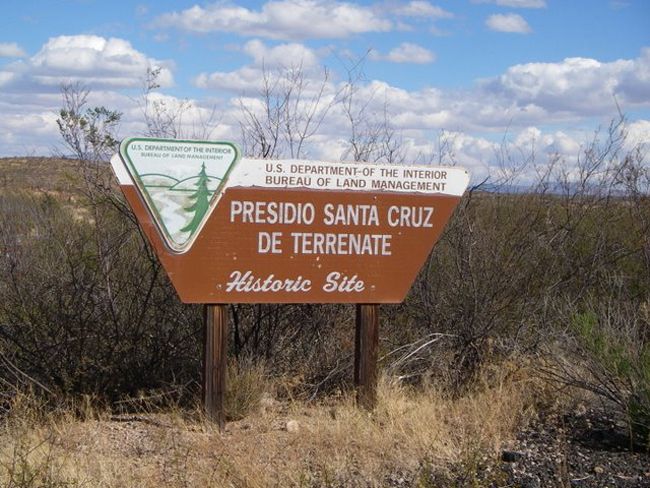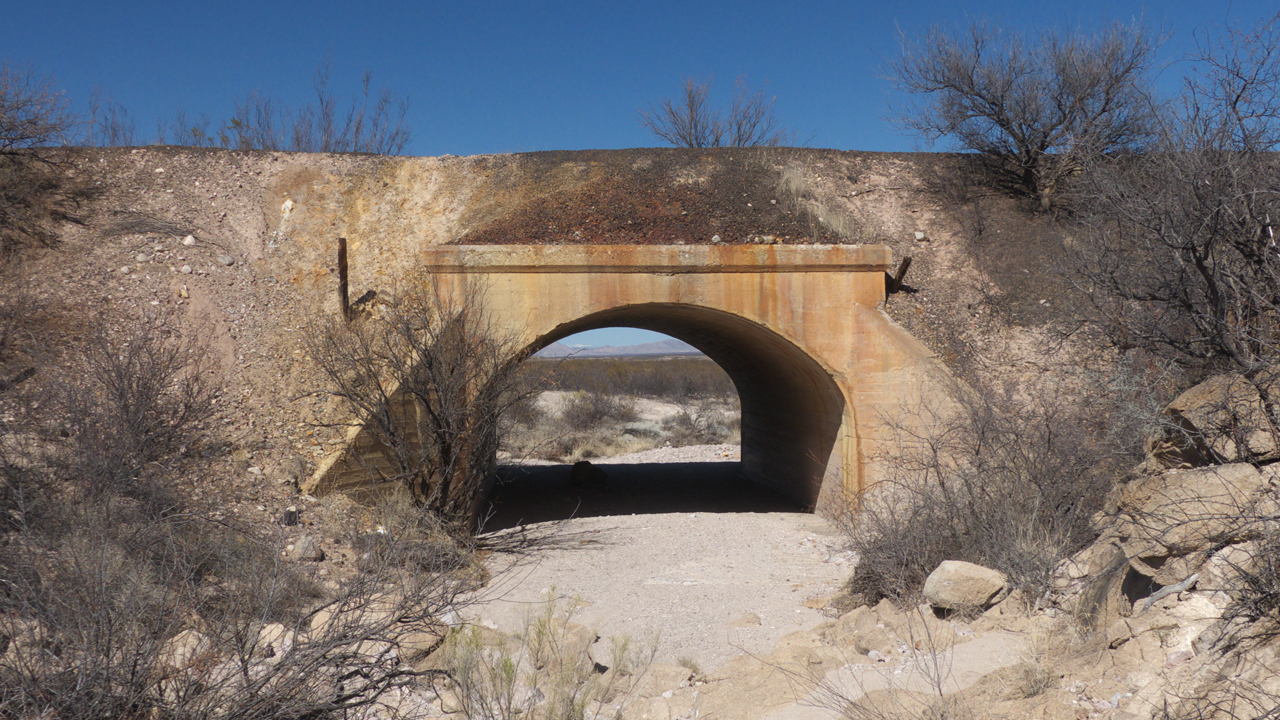
The Forgotten Frontier: Unearthing the Ghosts of Presidio Santa Cruz de Terrenate
Dust devils dance across the parched Sonoran landscape, swirling around the skeletal remains of mesquite and creosote bushes. The air shimmers with heat, and the silence, broken only by the distant cry of a hawk, is profound. Here, amidst the seemingly endless expanse of southern Arizona, lies a place where empires clashed, where human will battled an unforgiving land, and where countless lives were lost in a forgotten struggle: Presidio Santa Cruz de Terrenate.
Established in 1775 by the Spanish Crown, Terrenate was not just another fort; it was a desperate gamble, a bold assertion of colonial power at the very edge of the known world. Situated on the east bank of the Santa Cruz River, approximately 60 miles southeast of present-day Tucson and 12 miles south of Fairbank, its strategic location was meant to protect the northernmost reaches of New Spain from the relentless incursions of the Apache, to safeguard the scattered missions and ranches, and to secure the camino real, the Royal Road that snaked through this treacherous territory. Yet, for all its grand ambition, Terrenate would become less a bastion of control and more a testament to the brutal realities of frontier life, earning it a chilling reputation as "the graveyard of the Spanish army."
A Desperate Gambit on the Northern Frontier

The Spanish Empire, in the late 18th century, was a sprawling, somewhat unwieldy behemoth, stretched thin across two continents. Its northern frontier in what is now Arizona and Sonora was particularly vulnerable. Indigenous peoples, especially the various Apache bands, fiercely resisted the encroachment on their ancestral lands, viewing the Spanish settlers, missionaries, and soldiers as invaders. The Reglamento de 1772, a comprehensive military reform decreed by King Charles III, aimed to consolidate and strengthen these vulnerable outposts. It mandated a new line of presidios stretching from the Gulf of California to Texas, each roughly 100 miles apart, to create a cordon against Apache raids. Presidio Santa Cruz de Terrenate was a direct result of this strategic shift, moved from its previous location in Tubac to a more exposed, yet theoretically more effective, position.
The task of establishing this new presidio fell to Colonel Hugo O’Conor, an Irish mercenary in the service of Spain, known as "the Red Captain" for his fiery hair and temperament. He was a seasoned frontier commander, intimately familiar with the harsh conditions and the tenacious Apache resistance. The site he chose for Terrenate was both defensible and problematic. While it offered access to water from the Santa Cruz River, it was also isolated, far from supply lines, and surrounded by terrain perfectly suited for Apache ambushes.
Life within the adobe walls of Terrenate was a monotonous yet perilous existence. Soldiers, often recruited from the poorer classes of New Spain, were paid poorly, equipped inadequately, and perpetually on edge. Their families, including women and children, lived alongside them, sharing the privations and the constant threat. "Imagine living every day with the knowledge that the very ground you stand on could erupt in violence at any moment," says Dr. Sarah Miller, a historian specializing in the Spanish Borderlands. "The heat, the dust, the scarcity of fresh food and clean water, compounded by the ever-present danger – it was a crucible for human endurance."
The Crucible of Conflict: Spanish vs. Apache
The primary purpose of Terrenate was defense against the Apache, but it quickly became a central stage for the brutal, no-quarter conflict that defined the era. The Spanish saw the Apache as indios bárbaros, savage raiders who stole livestock, attacked travelers, and threatened the very fabric of their colonial enterprise. To the Apache, however, the Spanish were invaders, encroaching on their hunting grounds, disrupting their way of life, and bringing foreign diseases. Their raids were not just acts of aggression but strategic responses, a means of survival and resistance.
The Apache, with their unparalleled knowledge of the terrain, their swift horsemanship, and their mastery of hit-and-run tactics, proved to be formidable adversaries. They understood the weaknesses of the Spanish, their reliance on slow, cumbersome supply trains, and their vulnerability to surprise attacks. The area around Terrenate became a killing field. Patrols venturing beyond the presidio walls were frequently ambushed. Livestock, essential for the survival of the garrison, was constantly rustled.
The casualty rate at Terrenate was staggering. In just five short years, from its establishment in 1775 to its abandonment in 1780, more than 200 Spanish soldiers died in its defense – an almost unbelievable number for a garrison that typically numbered around 50-60 men at any given time. This meant a near-complete turnover of the garrison several times over, a constant cycle of fresh recruits arriving only to meet a similar fate. Commanders struggled to maintain morale, and the presidio earned its grim nickname, "the graveyard of the Spanish army."
One particularly harrowing account from the period details a large Apache attack in October 1776, barely a year after the presidio’s founding. Captain Francisco Tovar, leading a patrol of 30 soldiers, was ambushed. A fierce battle ensued, with Tovar and 15 of his men killed. The Apache, after securing their victory, reportedly mutilated the bodies and took their weapons. Such events were not isolated incidents but a grim pattern, illustrating the sheer intensity of the conflict and the high price paid by those who manned the frontier.

A Life Defined by Scarcity and Sacrifice
Beyond the constant threat of attack, daily life at Terrenate was a relentless battle against the environment itself. The Sonoran Desert, beautiful in its own stark way, was a harsh mistress. Water, though present in the Santa Cruz River, was often contaminated or difficult to access safely. Food supplies were frequently delayed or insufficient, leading to malnutrition and disease. Scurvy, dysentery, and various fevers were rampant, claiming lives as surely as Apache arrows.
The presidio itself was a relatively crude affair, built of adobe and local stone, designed for defense but offering little in the way of comfort or amenities. Its walls, while thick, were vulnerable to determined attacks. Inside, quarters were cramped, sanitation was poor, and privacy was a luxury unknown. The soldiers, far from their homes and families, often felt forgotten, their sacrifices unappreciated by the distant authorities in Mexico City or Madrid.
"The soldiers at Terrenate weren’t just fighting the Apache; they were fighting despair," explains Dr. Miller. "They were at the very end of the supply chain, often weeks or months from any significant support. Their resilience, despite the odds, is truly remarkable."
The Inevitable Retreat and Lingering Echoes
By 1780, it became clear that Presidio Santa Cruz de Terrenate was unsustainable. The staggering loss of life, the exorbitant cost of maintaining it, and its failure to effectively stem the tide of Apache raids forced a strategic reevaluation. The Spanish command made the difficult decision to abandon Terrenate and relocate the presidio to a more defensible and less exposed site: the future city of Tucson. This move marked a significant shift in Spanish frontier policy, acknowledging that some outposts were simply too costly to maintain.
When the soldiers and their families finally departed, they left behind not just the adobe walls, but the ghosts of their fallen comrades, the memories of relentless struggle, and the echoes of a desperate fight for survival. The presidio, once a symbol of Spanish power, slowly crumbled under the relentless assault of time and weather, its adobe melting back into the earth.
Today, little remains of Presidio Santa Cruz de Terrenate beyond its foundations and a few scattered artifacts. The site is a whisper, a faint imprint on the landscape. However, archaeological investigations, notably those conducted by the Center for Spanish Colonial Archaeology, have begun to peel back the layers of dust and time, revealing tantalizing glimpses into this forgotten chapter of history. Excavations have uncovered adobe walls, soldier’s quarters, blacksmith shops, and countless everyday objects – pottery shards, musket balls, coins, and personal effects – that tell the story of the men, women, and children who endured life and death at the edge of empire.
The story of Presidio Santa Cruz de Terrenate is more than just a tale of military failure or colonial overreach. It is a profound narrative of human perseverance, of the brutal realities of frontier expansion, and of the clash between vastly different cultures. It reminds us that the history of the American Southwest is deeply layered, shaped not just by cowboys and gold rushes, but by Spanish conquistadors, resilient Native American nations, and the untold sacrifices made in places like Terrenate.
As the sun sets over the Santa Cruz Valley, casting long shadows across the silent earth, one can almost hear the faint echoes of musket fire, the shouts of battle, and the prayers of desperate men and women. Presidio Santa Cruz de Terrenate, though physically almost gone, remains a powerful symbol – a stark reminder of the immense human cost of empire, and a solemn monument to those who lived and died on Arizona’s forgotten, blood-soaked frontier. Its story continues to whisper from the desert, waiting for those willing to listen.


